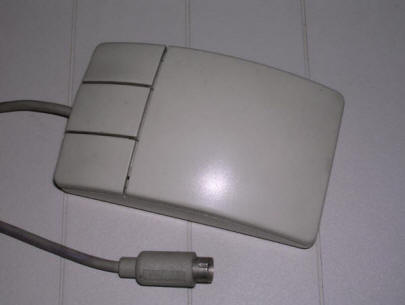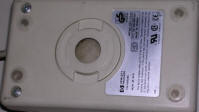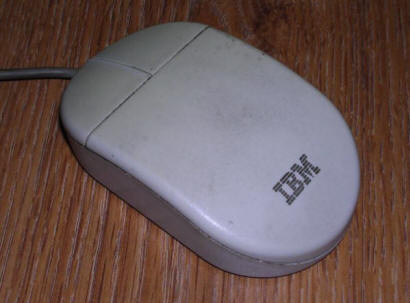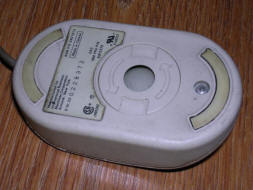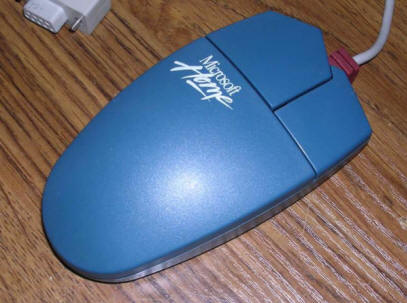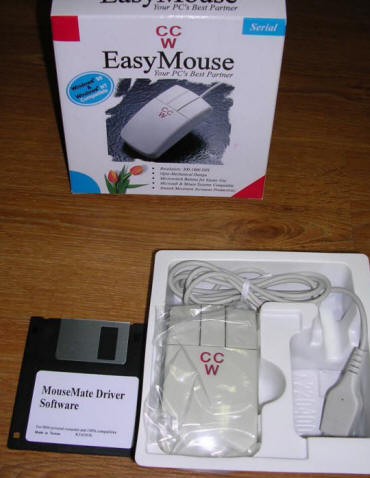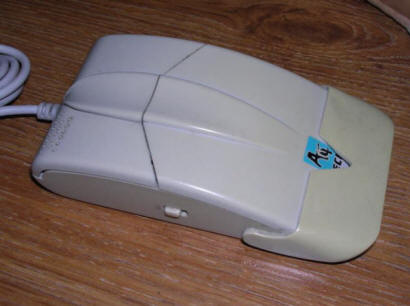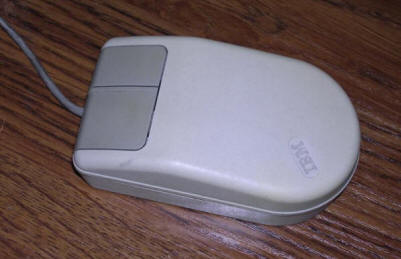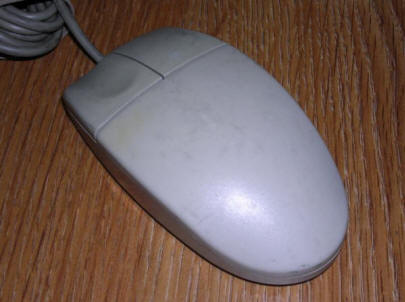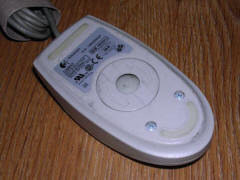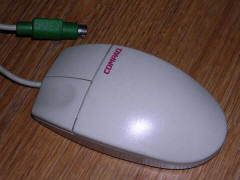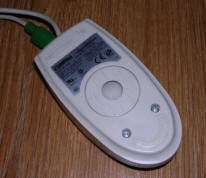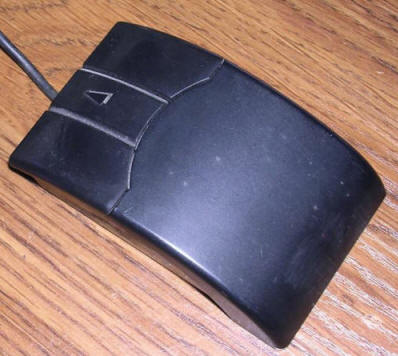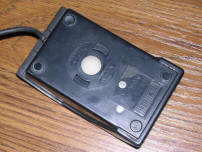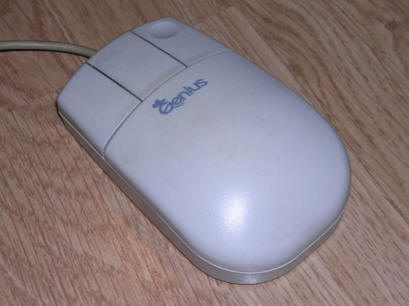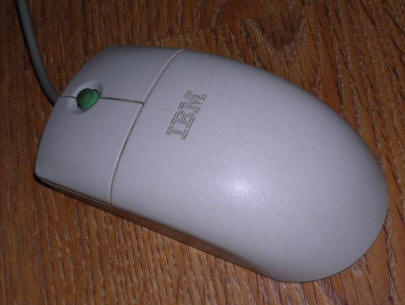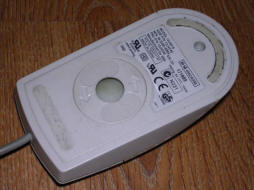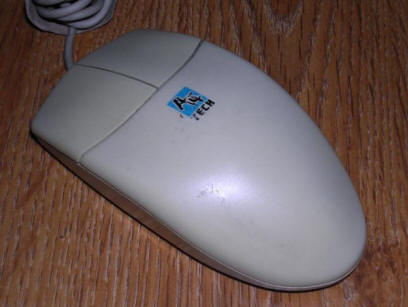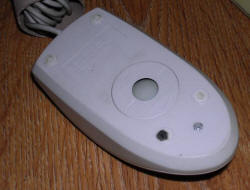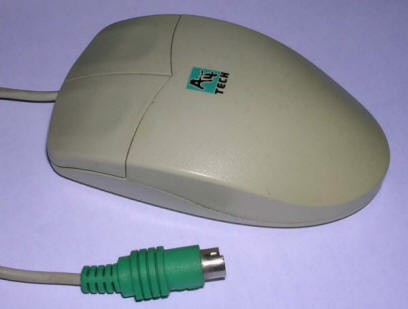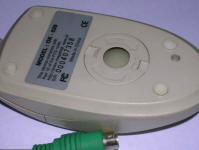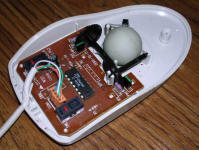Mice (2)
Mouse - today a normal computer peripheral, used every
day to point different widgets on screen, click buttons or scroll
webpages. This sub-page shows different mice from different
manufacturers and years. You can see how a PC mouse evolved and when
they got wheels, as well as how the buttons disappeared and re-appeared
in mice development.
In 1990s mice got more and more popular. Late 90s, with ATX standard
getting more and more popular, made serial port slowly disappear form
PCs. Thus, most mice from mid to late 90s are equipped with PS/2 port
connector or a special converter which allowed spceific mouse to work
both with serial port or PS/2. This converter works with specific models
of mice, not every PS/2 mouse.
| Microsoft Home Mouse | Port: Serial | |
| Manufactured by: Microsoft | ||
| Type: Ball mouse, 2 buttons | ||
| Approx. year: 1995 | ||
| Information: In 1995 Microsoft released Windows 95, their revolutionary operating system. Then they expanded line of Microsoft Home software (mostly known from Plus! products) to small hardware products. Microsoft Home Mouse was a mouse of this series. Because in Windows 95 middle button was not used as extensively as in dome DOS apps or Unix applications, mice designed especially for Windows 95 were usually designed with 2 buttons. This mouse has left button with unusual cursor-like shape and its color is like Win95's desktop. |
||
|
The quality of this rodent is quite good, and very good
comparing to Taiwanese ones. The design is quite interesting,
especially comparing to then-popular white mice. This
dark-blue-green color had survived for a few years in different
mice models, not only in Microsoft. Interesting thing: Video Advertisement |
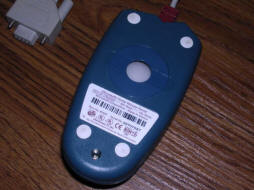 |
|
| CCW EasyMouse | Port: Serial | |||
| Manufactured by: CCW? | ||||
| Type: Ball mouse, 3 buttons | ||||
| Approx. year: 1995 | ||||
| Information: In 1995 many peripheral manufacturers marketed their ordinary peripherals as "Windows 95 compatible". This mouse is one example of such marketing. It is a typical PC 3-button mouse connected to serial port, made by CCW, but similar mice were also sold with Genius brand. It works as well in DOS as in Windows 9x. This particular unit is new, I got a few of them after computer service went bankrupt. These mice were quite cheap and frequently were bought with new PCs. 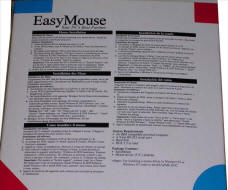 |
||||
|
||||
| A4Tech H8G | Port: Serial | |||
| Manufactured by: A4Tech | ||||
| Type: Ball mouse, 3-button | ||||
| Approx. year: 1995 | ||||
| Information: A4Tech made some interesting computer peripherals, and this is one of the designs which were never adopted by users. This mouse had part of a rear casing on a small hinge. By putting it down, mouse could be held with a palm. When it was put up, it forced finger grip, in which mouse is moved mostly with fingers. After using it was possible to just make this mouse stand vertically and not occupy so much space. These mice were not popular too much, as its design was quite eccentric as for PC mice. It was marketed since before Win95. |
||||
|
This mouse has a small switch to choose between
Microsoft/Logitech standard and Mouse Systems standard, so
internally it is older design than Win95-compatible mice.
|
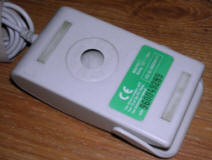
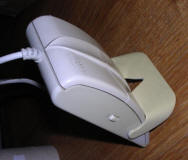 |
|||
| IBM Small mouse | Port: PS/2 | |
| Manufactured by: IBM | ||
| Type: Ball mouse, 2 buttons | ||
| Approx. year: 1996 | ||
| Information: This is a small mouse offered with some IBM late Aptiva and PS/2 computers, as well as re-started PC line. However, more frequently larger mice were sold. These small mice were chosen by customers who purchased ThinkPads - to have a portable mouse for a portable computer. You can see similar mouse, but black in ThinkPad 850. This mouse was designed with portativity in mind, as it is lighter than typical mice and its buttons are scaled down especially to prioritize left button. |
||
|
These mice were available for a quite long time, serving many
computer series. This mouse was also replaced in some extensively-serviced PS/1 sets, but usually later ones or PS/1 Pro. |
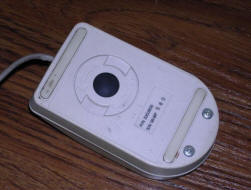 |
|
| Genius EasyMouse | Port: Serial | ||
| Manufactured by: Genius | |||
| Type: Ball mouse, 3 buttons | |||
| Approx. year: 1998 | |||
| Information:
This mouse was very popular in 1998 and 1999 and it was the
cheapest mouse around for a long time. It has 3 buttons and it's
a mutation of "EasyMouse". Unfortunately it has one flaw: After
long usage its button contacts wear off, especially left mouse
button becomes harder and harder to press. Re-soldering them
works for a short time, so it's better to replace contacts - if
you don't have spare one replace with middle-button's contact
:). It was supplied with a small manual and usually no disk - as Windows 95 supports it.
|
|||
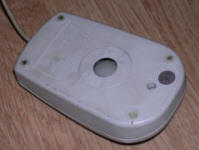
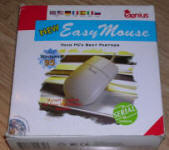
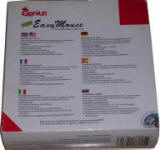
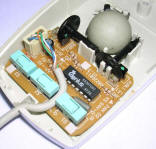 |
|||
|
|
Previous page |
|





